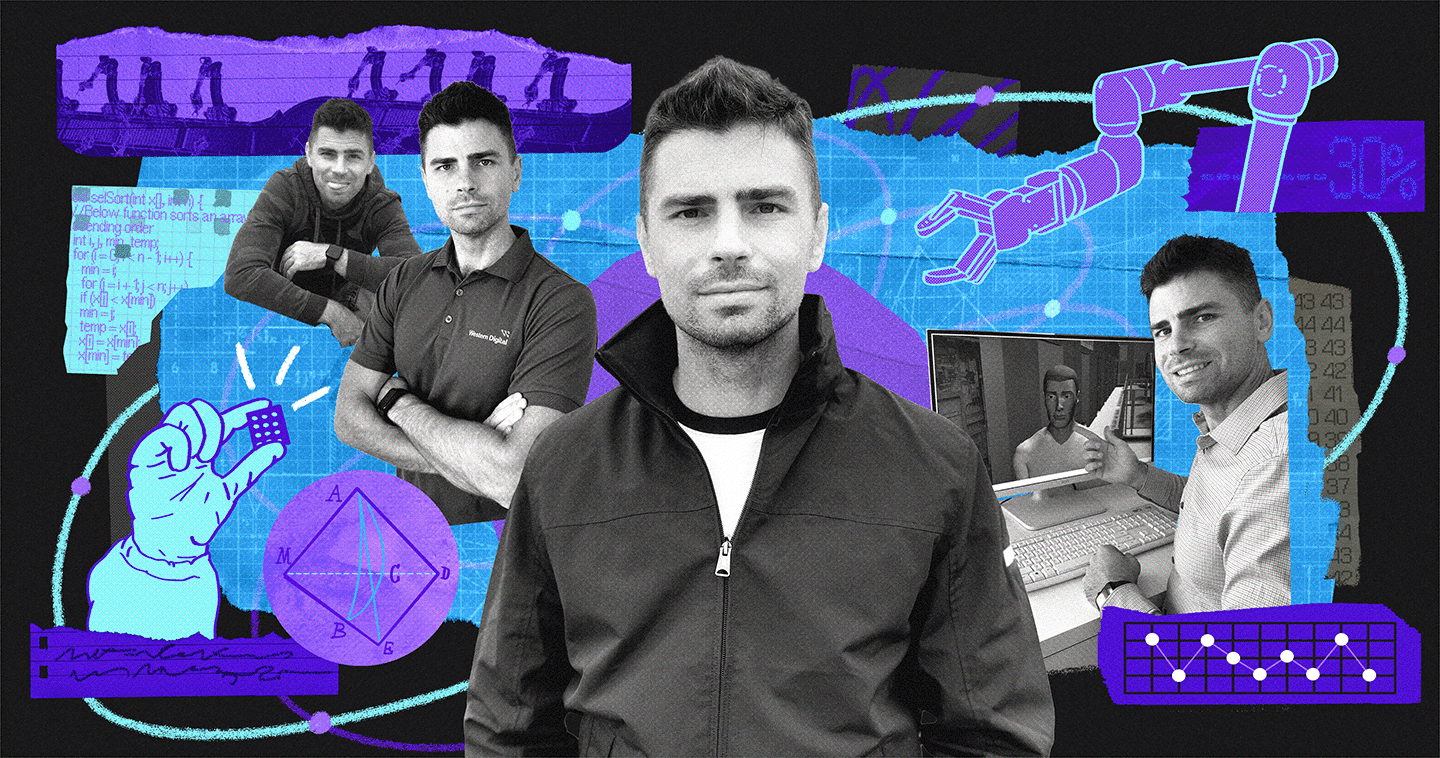Aradhita Parasrampuria’s career in fashion was never in doubt, even as a little girl in Gujarat, India. Her hometown is a center of the fashion industry in India, so from an early age she was surrounded by artistry and design.
“My whole childhood I was immersed in the world of fashion,” Parasrampuria recalled. “I thought it was just so glamorous.”
While flashy depictions of New York enamored the young Parasrampuria, her work today occupies a different space. Blending fashion, design, science, and sustainability, her focus is holistic and rooted in a connection to the planet and its people. Leavened by an interdisciplinary approach, Parasrampuria sees a path forward for fashion that doesn’t sacrifice community or climate for creativity.
Finding the passion
Parasrampuria’s black hair falls to her shoulders, where it meets a simple, black top; timeless, yet eminently fashionable for technologists and fashion designers alike. The singular aesthetic betrays her designs, which are often vibrant and expressive. Parasrampuria’s work is at the center of many ideas, an intersectionality she inherited from her studies.
“I was drawn to the freedom at the Parsons School of Design,” Parasrampuria explained. “Every term, I could choose to focus on fashion or materials. Being in New York offered me opportunities at fashion companies or biotech labs, so it was just a great fit for my undergrad.”
She described the time she spent interning with fashion icons and ecommerce giants, hustling all up and downtown, time that rounded out her understanding of the industry.
But the defining moment in her young career came after her first year of college when she returned home to work in a textile factory. Despite growing up in Gujarat, she never worked in one of the facilities there and saw the job as an opportunity to learn more about the entire fashion industry. What she saw, though, broke her heart.
“Workers exposed to toxic chemicals from the dyes were developing severe skin conditions and respiratory issues like dermatitis and asthma,” she recalled. “And they couldn’t invest in safety equipment like gloves because the timelines and profit margins are so tight.”
She was silent, then. The imagery was heavy in the air and Parasrampuria’s gaze had a quiet resolution.
“It was an eye-opening experience,” she said finally. “It led me to consider sustainable fashion not just from an environmental perspective, but from a human ethical perspective, too.”
Citizen science and pragmatic fashion
Since then, Parasrampuria’s work has been as much about biology and chemistry as it’s been about fashion and design. Her first major step into sustainable fashion was her work on sustainable dyes, but she needed a space to run experiments and synthesize these new dyes, which proved hard to find.
“I was really doing my rounds, trying to get access to any lab. But they didn’t want to train someone from scratch, of course,” she said. “I was really lucky to find Genspace. It really provided me with the space to stop reading and start doing.”
Learning as she went, Parasrampuria worked with hulking science technology equipment and gained an affinity for the tiny microbes she relied on for studies. She tested and retested algae and cellulose with scientific variables, much like she would explore a design with a sketch pad.
“Usually, natural dyes are very neutral beige and browns, but I discovered with the bacteria you can make these intense fuchsias and electric blues that typically require synthetic dyes,” she explained.
As she shared more about her work during the interview, Parasrampuria’s confidence bubbled to the surface. She detailed how she taught herself the most important assays, making mistakes along the way, and how the bacteria happily devoured the peanut butter she supplied them. Her early results sparked intrigue, fueling the cycle of research and development.
“When I first started working with the bacterial dyes, I felt like there was such a stigma. People would ask me ‘Is it safe to touch it?’” said Parasrampuria, “but they never would have known it was made with bacteria unless I told them.”
Through the communal spaces and access to technology at Genspace, she had created her own niche where she could be more than a climate activist or fashion designer alone. Her work compressed the extremes of fashion and sustainability to prove they could meet at some new and striking place.
What started as small test batches and swaths of fabrics grew into flowing, organic pieces which covered models in unreal, yet natural colors. Soon, more complex designs and photoshoots were lined up, and her work appeared in Vogue, capturing the imagination of designers and manufacturers. The sustainability angle was important, but Parasrampuria’s designs elevated the work as a whole.
“You need something visual, something powerful right away,” she said. “That’s what pushes people to do something different.”
Easy on the eyes, easy on the planet
As the conversation shifted to the present, Parasrampuria seemed to be constantly changing hats. One story was about a new research project, but the next was about working with distributors, and yet another about wanting to design more.
“I spend a lot of time doing R&D, but I’m still thinking about color schemes and making it something people are excited to see,” she said. “I still have that creative edge, but I’m spending more time thinking about how to scale this up, how to collect data for measurable impacts.”
The realities of launching her business, Cellsense, and pushing an industry forward seem to have nestled in Parasrampuria. She recognizes that her work lies at the crossroads of so many ideas and institutions, and the diligent application of art and technology is the key to pressing forward. Every design is married to a deliverable, every experiment backed by research.
Despite her expanding responsibilities, Parasrampuria remains laser focused on her goal: to make fashion sustainable, for people and planet, without sacrificing creativity. For Parasrampuria, like so many others, it comes back home.
“My create is something honest, something genuine, and something that matters to my community.”
What’s Your Create? is a new series from Western Digital that explores creators in all disciplines using technology to enhance their craft.
Artwork by Rachel Garcera. Video content edited by Eden Hurst



